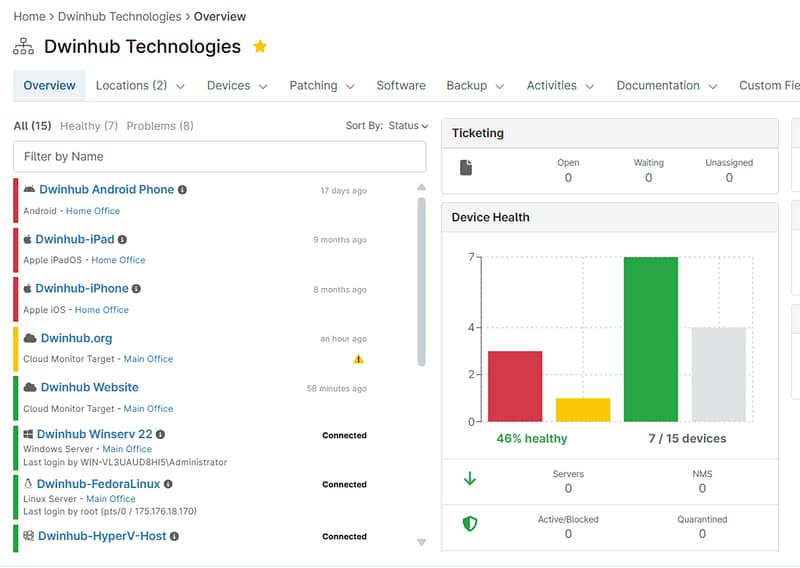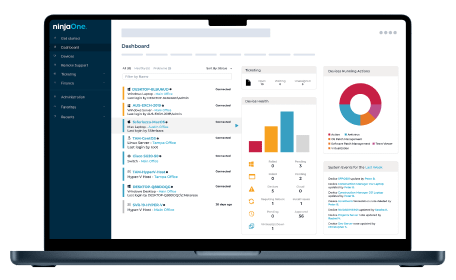Effortless Device Inventory Management with NinjaOne
Keeping track of every device in your network shouldn’t feel like a guessing game. Whether you’re managing laptops, desktops, mobile devices, or networking gear, visibility is critical for security, compliance, and operational efficiency.
NinjaOne simplifies the way IT teams manage hardware assets and system data by offering a centralized, intuitive device inventory platform. With deep visibility, automated discovery, and seamless reporting, you’ll always know what you’re working with—and what’s missing.

Visibility That Powers Control
Real-time device discovery and syncing
Unified hardware inventory dashboard
Integrated device inventory and asset management
Connect inventory data with ticketing, patching, monitoring, and endpoint management to create a fully integrated IT workflow that reduces complexity and risk.
Role-based access controls
Features built for complete Inventory Intelligence
Comprehensive device detail views
Network device inventory tool integration
Custom fields and tagging
User-to-device relationship mapping
Inventory audit reports and exports
See how NinjaOne makes inventory management smarter and simpler
Complete visibility for growing IT environments
Streamlined asset tracking for MSPs and multi-tenant IT teams
Managed Service Providers often juggle dozens of clients, each with its own set of endpoints. NinjaOne’s multi-tenant architecture allows MSPs to view, manage, and report on device inventory across clients from a centralized dashboard. Custom fields and role-based permissions ensure each client’s data remains secure while simplifying SLA tracking and contract reporting. Technicians can also link devices directly to ticket histories, reducing time spent on repeat issues.
Security and compliance enforcement through asset visibility
Take Control of Your IT Assets Today!
NinjaOne’s device inventory platform gives IT teams the clarity they need to manage hardware, reduce risk, and improve performance. From automatic discovery to detailed reporting, you’ll never be left guessing about your assets.
Start your free trial today and experience inventory management that’s powerful, accurate, and built for scale.

Device Inventory FAQs
What is device inventory?
Device inventory refers to the process of tracking and managing all devices connected to an organization’s IT environment. This includes endpoints like laptops, desktops, servers, and mobile devices. A device inventory system helps IT teams maintain visibility, ensure compliance, and streamline operations by providing real-time data on device status, ownership, and configuration.
What is network device inventory?
Network device inventory focuses specifically on cataloging and managing networking hardware such as routers, switches, firewalls, and access points. A network device inventory tool helps IT professionals monitor device health, track configurations, and maintain an accurate map of network infrastructure for better performance and security.
What is the difference between device inventory and hardware inventory?
Device inventory typically includes all connected endpoints and systems, covering both hardware and software details. Hardware inventory, on the other hand, refers specifically to the physical components of devices—like CPUs, RAM, hard drives, and network interfaces. While device inventory provides a broader view of an asset’s role and usage, hardware inventory focuses on its tangible specifications.
Related Resources
How to Change Your Device Name
Ensure clear and consistent device naming across your network to stay organized, streamline troubleshooting, and generate accurate reports.
How to Secure IoT Devices
Secure your IoT devices by fixing weak defaults and outdated software.
What Is Autonomous Endpoint Management?
Boost your IT efficiency – explore our complete guide to AEM, its benefits, and how it works.
